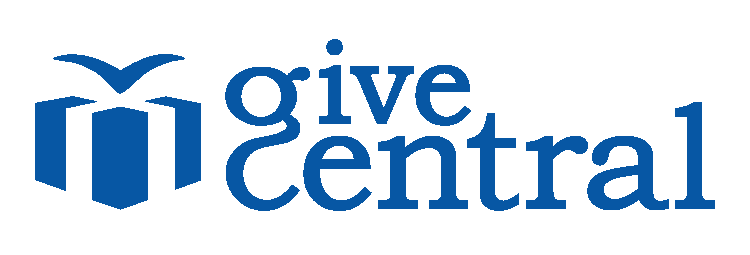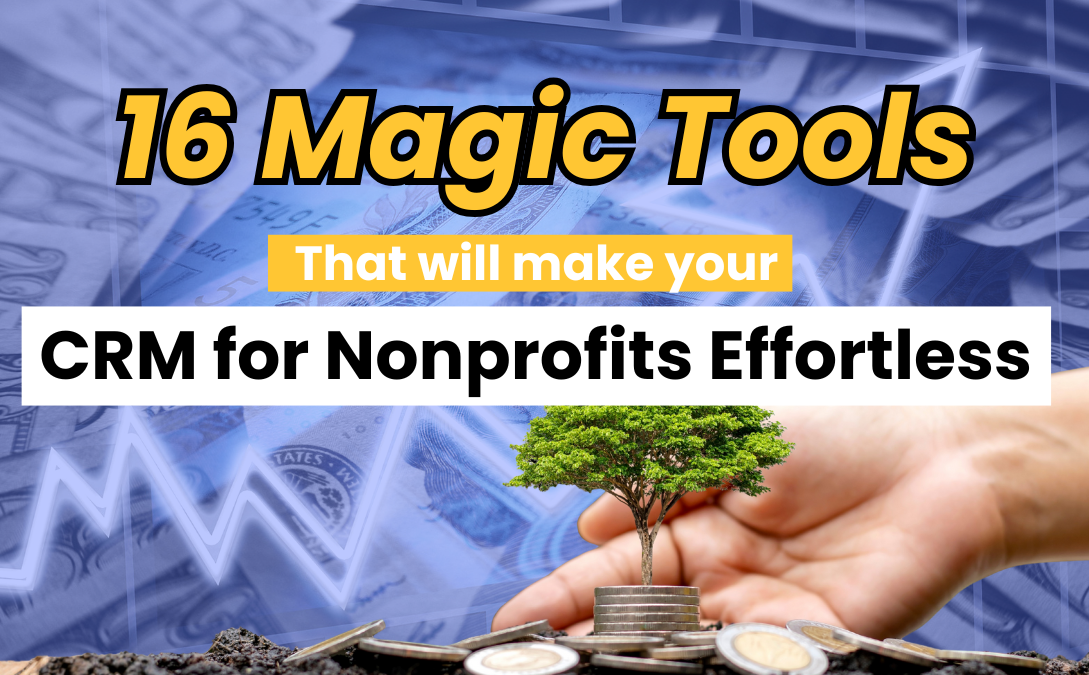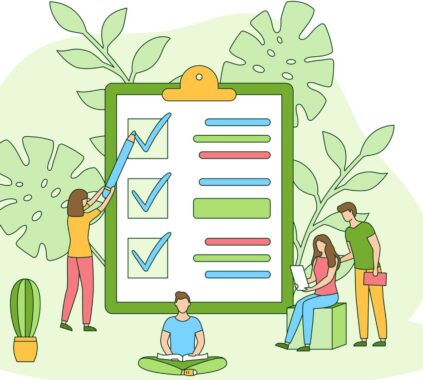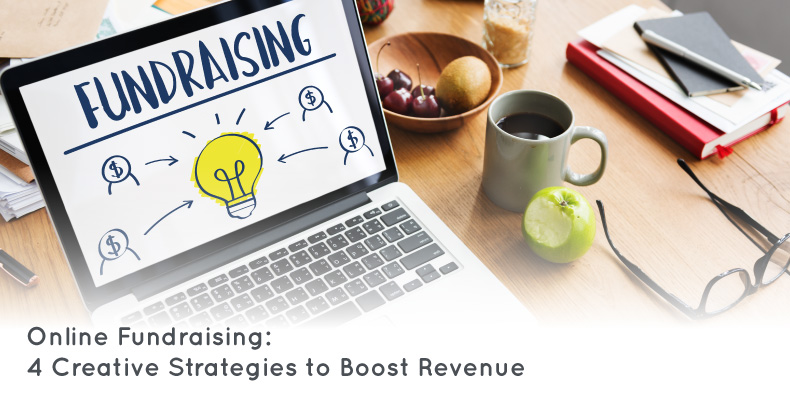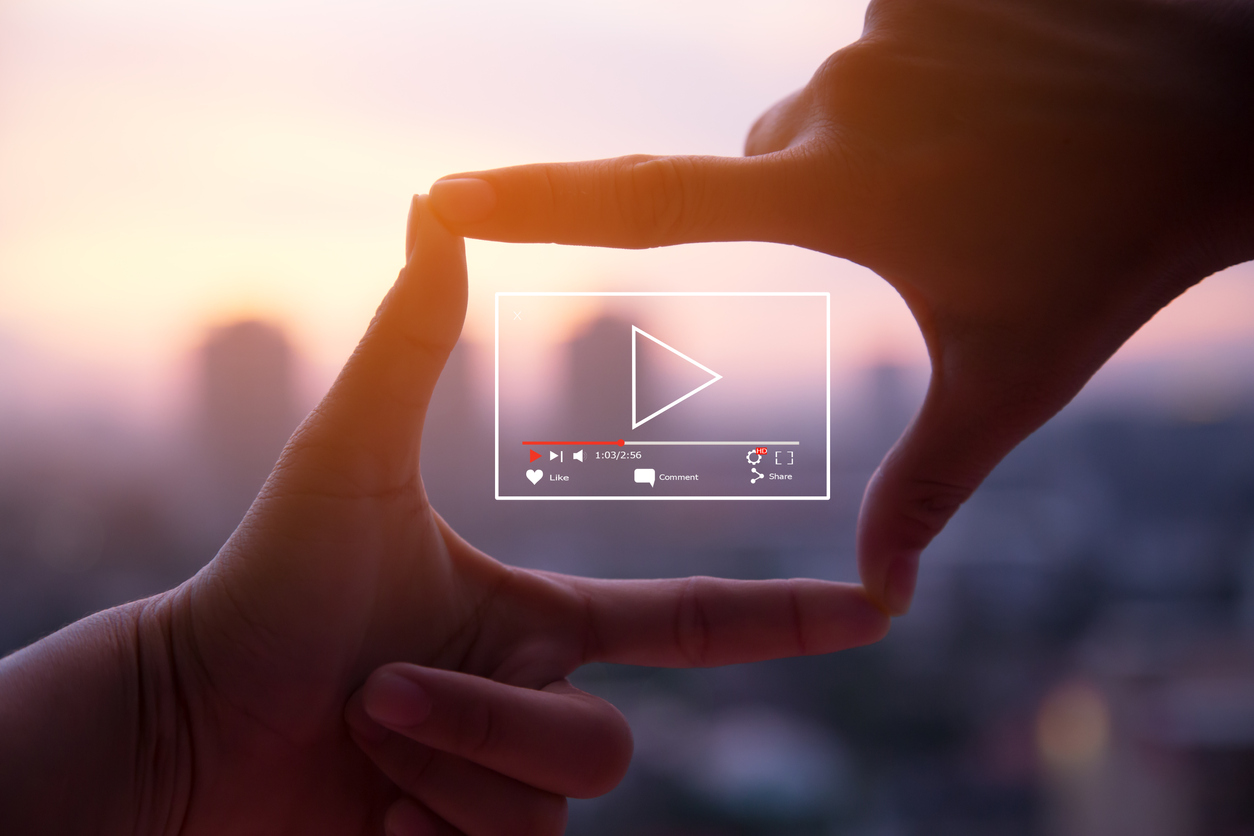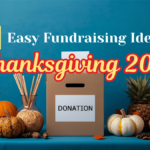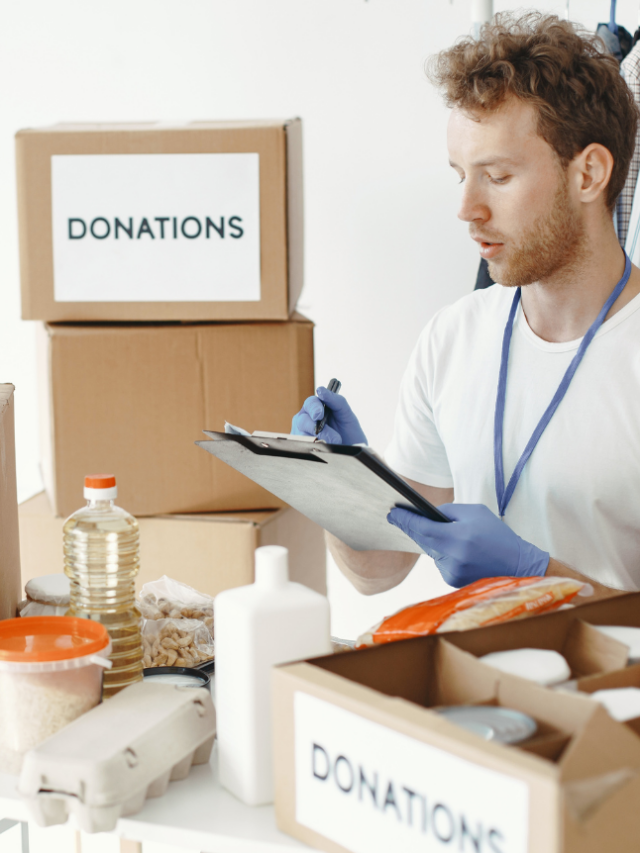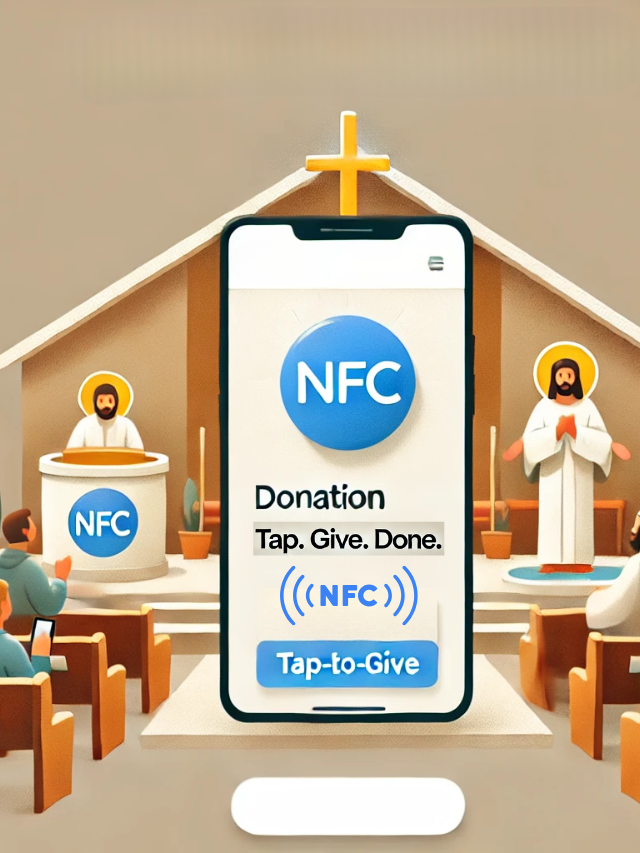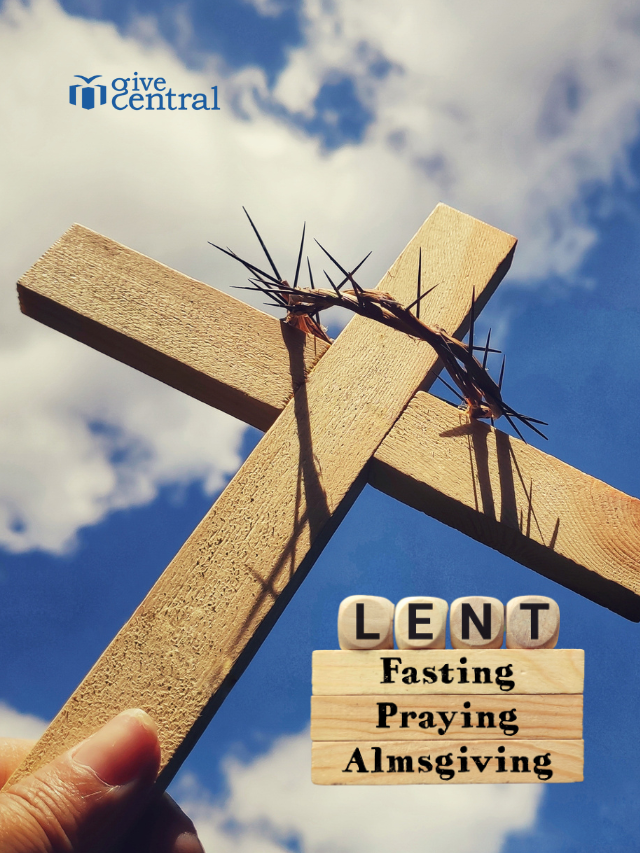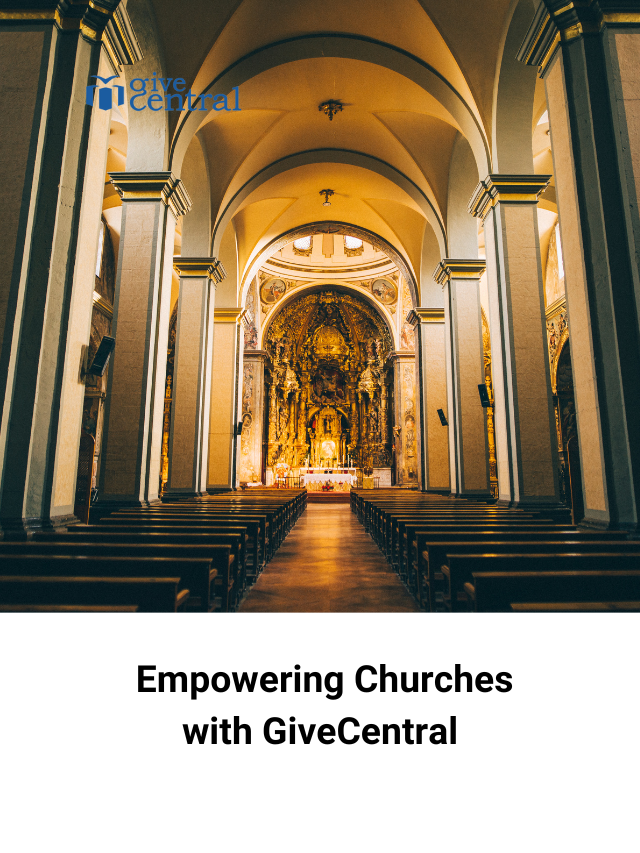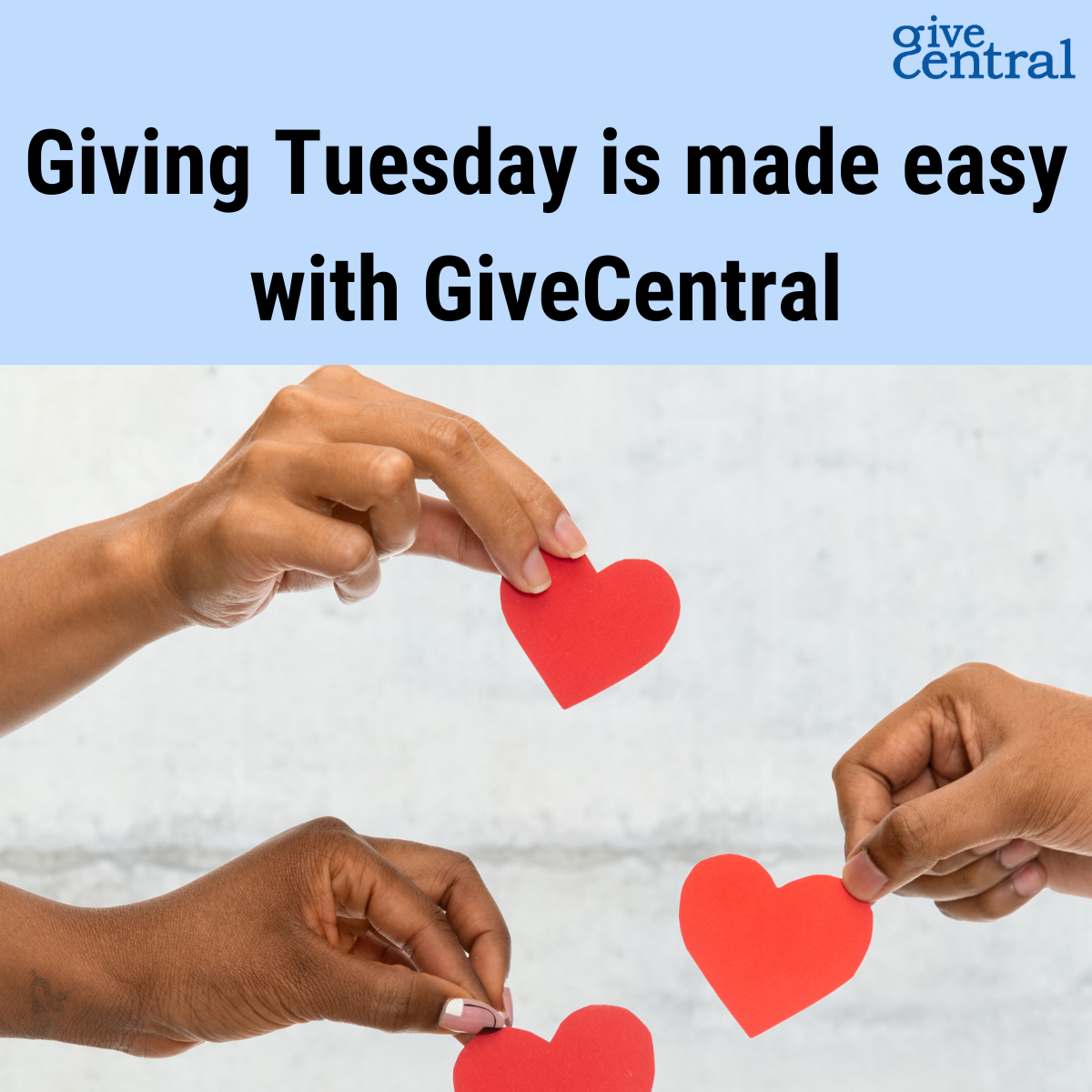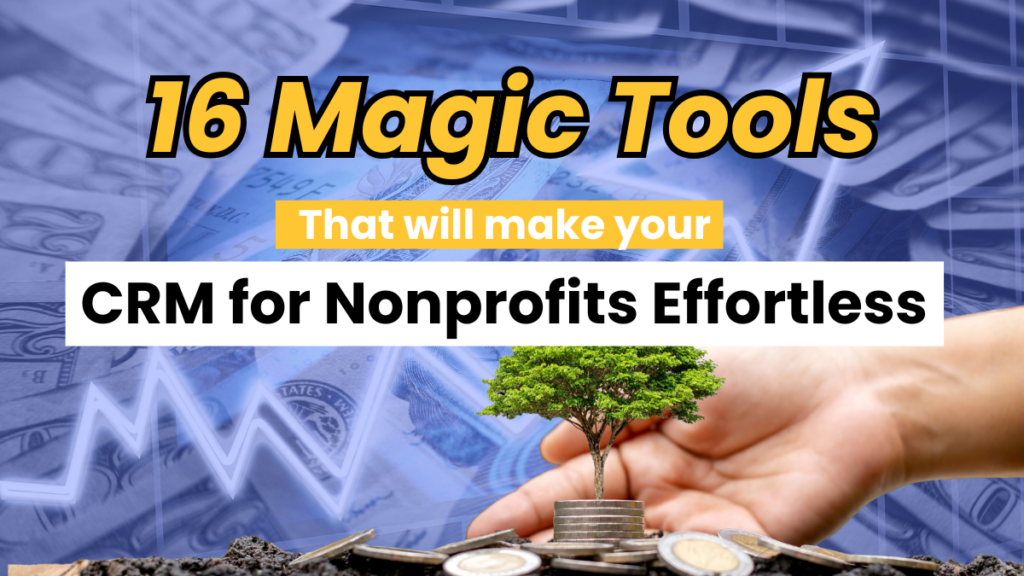
Introduction
In the world of nonprofits and charity, nothing beats the feelings of seeing a donor’s eyes light up when they hear how their donation of $50 turned into three meals for families in need. But the honest truth is, without the right tools, that magic can get buried under spreadsheets, sticky notes, and endless email chains. That’s where a solid CRM for nonprofits comes in.
It’s not just software; it’s your secret weapon for saving yourself from juggling tasks for capital campaigns or planned giving, while keeping corporate sponsorships humming and turning one-off gifts into recurring donations.
In this article, I’m sharing 16 game-changing tools in donation CRMs for nonprofits that I’ve either used myself or seen transform orgs like mine. I’ll throw in real-world examples from my experience (and a few from chats with peers) to show how they play out. No bluff, just practical stuff to help you build donor relationships that stick. Let’s dive in.
1. Donor Data Management: Your Relationship GPS
Imagine this: You’re staring at a donor list that’s a hot mess of Excel tabs. Suffocating! Right? A good donor management tool fixes that by pulling everything—contact info, past gifts, even notes from the coffee chat—into one clean dashboard. It segments folks by what lights them up, like animal lovers vs. education buffs.
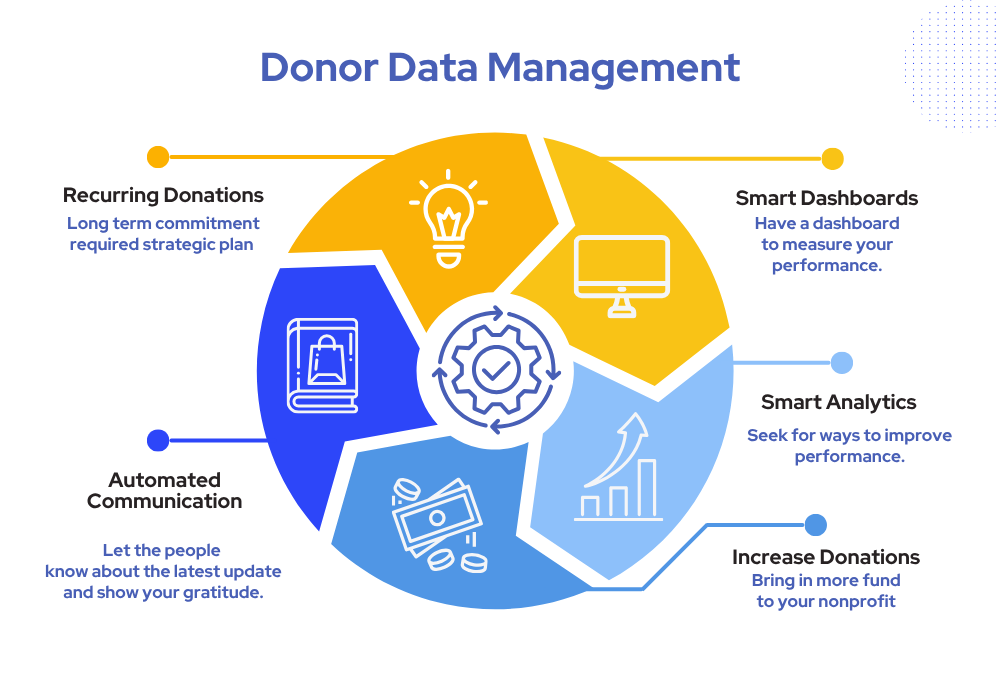
My Take:
At the shelter, we used this to spot “super supporters” who have donated three years running. After sending them a quick, personal video update? Boom—retention jumped 20%. It’s like having a crystal ball for who might donate next.
2. Secure Online Donation Processing: Friction-Free Giving
People are prone to abandon a cart or payment if checkout feels like a tax form. Convenient Payment Gateways like Stripe or PayPal baked into your CRM make donations as easy as buying coffee. Transactions zip right into your records—no more double-entry drudgery.
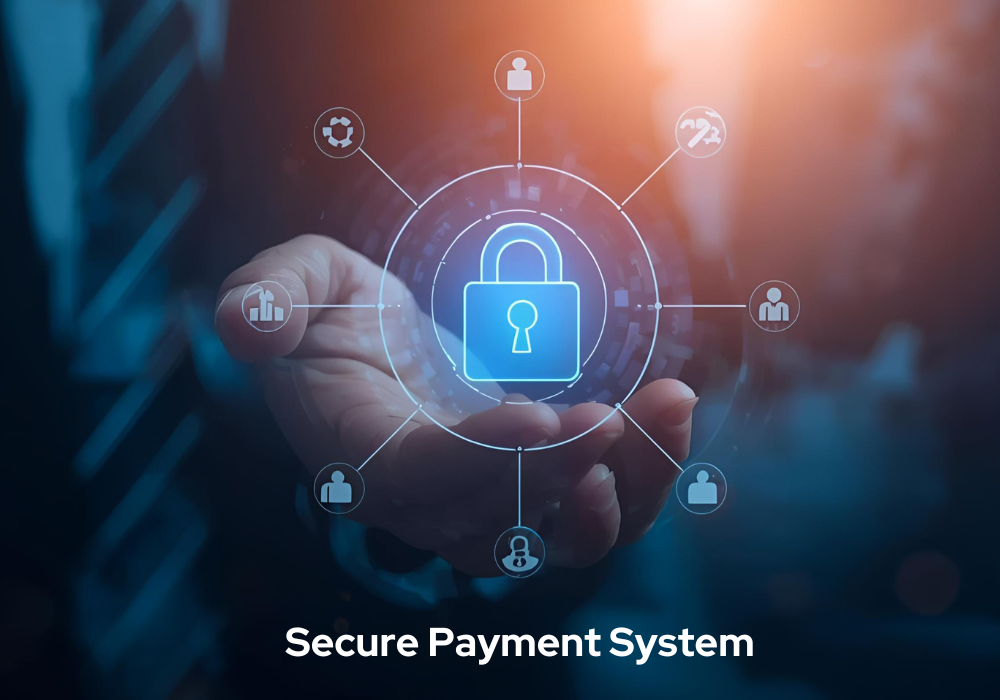
Quick Win:
During our annual drive, this cut processing time by half. One donor texted me later: “That was so smooth, I’m setting up monthly!“
3. Automated Acknowledgement: Because Manners Matter
Nothing says “we see you” like a thank-you email hitting a donor’s inbox before they’ve closed the tab. These tools craft personalized notes with the gift amount and a teaser of the impact. When you can automate the process using smart tools with appropriate messages, the effectiveness increases 10 folds.
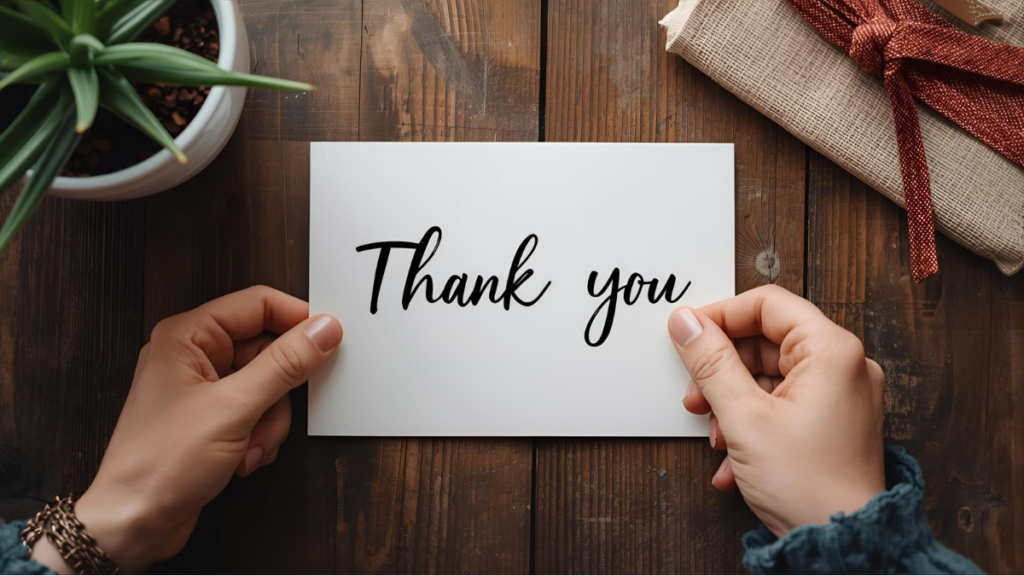
Story Time:
A friend of mine, at a literacy nonprofit, automated receipts with kiddo success stories. Donors started replying with “Tell me more!“; turning one gift into ongoing chats and bigger planned giving.
4. Capital Campaign Tracking: From Dream to Done
Launching a capital campaign? It’s like herding cats unless you’ve got a module that maps pledges, hits milestones, and dashboards your progress. Think parameters that actually convert the leads and let the CRM tools do the rest.

Real Deal:
We raised $250K for a new clinic wing using a CRM for nonprofits. Tracked 50 major pledges without losing sleep. These milestones popped up as confetti in our team Slack.
Pro tip: You can set alerts for lapsed pledges. That will save you from awkward “remember me?” calls.
5. Planned Giving Management: Planting Seeds for Tomorrow
Planned giving isn’t glamorous, but it’s gold for longevity—wills, trusts, that sort of thing. Tools here track intentions, nudge with anniversary notes, and flag prospects via data patterns. So, you can plan targeting your donors ahead of time. You can use various mediums such as social media campaigns, podcasts or video campaigns.
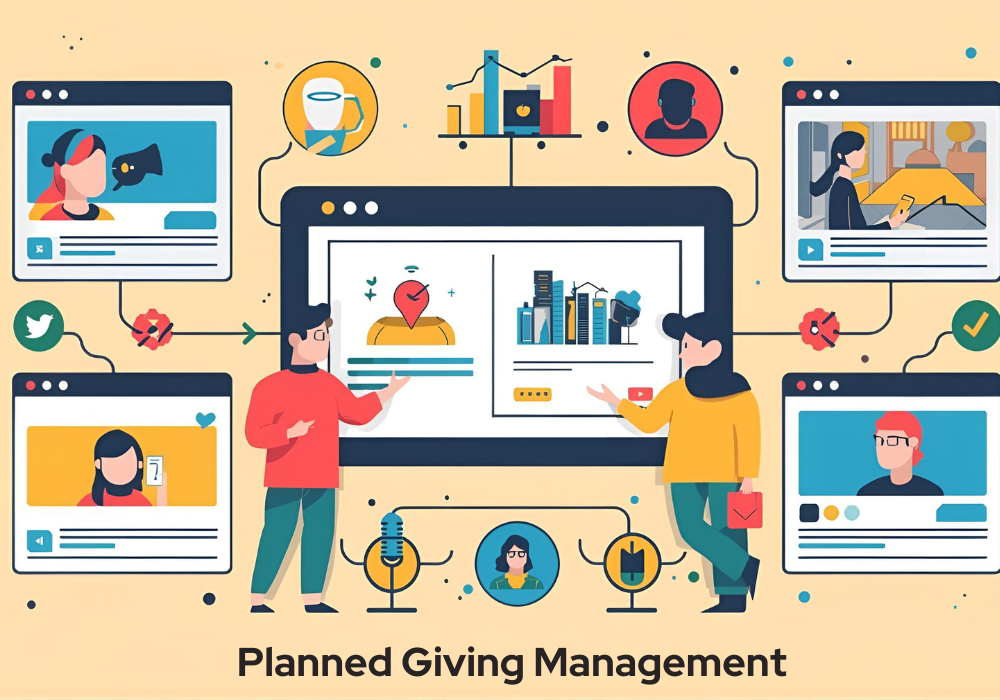
From the Trenches:
An arts organization identified 15 legacy donors through age and giving history analytics. One chat led to a $100K request. It’s quiet work, but, does it secure your future? You need to plan recurring donations.
6. Corporate Sponsorship Management: Partners Who Stick Around
Corporates love metrics. This system logs deals, auto-generates impact reports, and profiles sponsors so you remember their CSR goals.

Example in Action:
For a health center’s charity drive, we used CMR tools to show how a bank sponsored logo on banners reached 5,000 views. They renewed at double the tier next year. Transparency = trust = renewals.
7. Crowdfunding for Nonprofits: Let Your Community Carry the Torch
Crowdfunding for nonprofits has become easy as nothing before with donation CRM tools. CRM ties all the hectic activities back to donor profiles for seamless execution.
Donation CRM tools help nonprofits manage crowdfunding campaigns efficiently by centralizing donor data, automating communication, and tracking contributions in real time. They enable personalized engagement with supporters, simplifying follow-ups and encouraging repeat donations. By analyzing donor behavior and campaign performance, nonprofits can optimize strategies for higher impact and transparency.
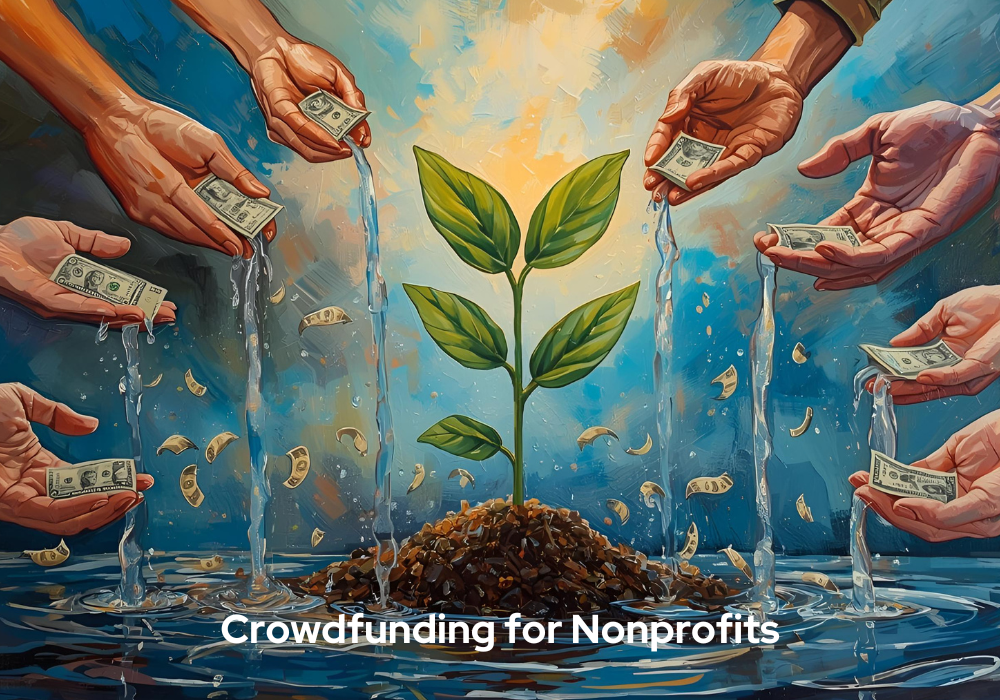
Crowd-Pleasing Moment:
During COVID, our shelter’s “Adopt-a-Puppy” crowdfund exploded when a board member’s post went viral. Raised $15K in a week, with every backer auto-added to the nurture list.
Pro Tip: Now some donation CRMs are offering APIs for crowdfunding platforms. It will definitely save your time, quality of work and reduce errors while keeping all the data in the same place.
8. Recurring Donations Automation: Steady as It Goes
Recurring donations are your budget’s best friend. Tools handle setups, card expirations, and self-edits so donors stay in control.
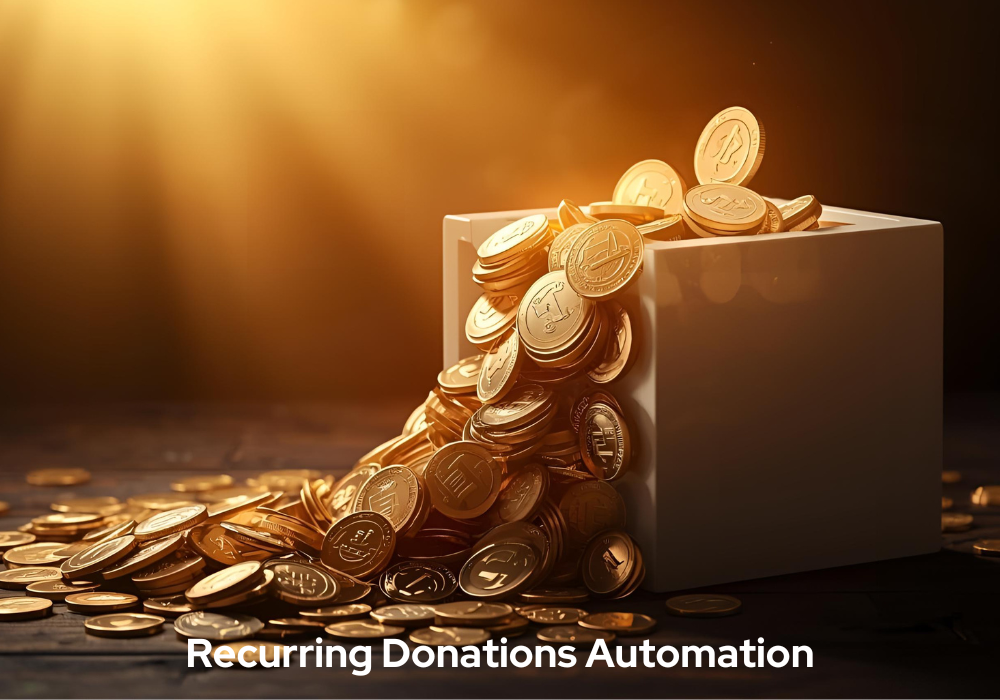
Personal Favorite:
Switched to this, and our monthly givers grew from 200 to 450. One donor said, “I forgot about it, until your impact email reminded me why I care.” Predictable cash? Yes, please.
9. Email Marketing & Drip Campaigns: Nurture Without the Nag
A CRM for nonprofits personalizes email outreach via automated drip campaigns, like welcome series or impact updates. Integrated with Mailchimp or HubSpot, it customizes based on donor behavior, boosting engagement and turning one-time donors into recurring donors.
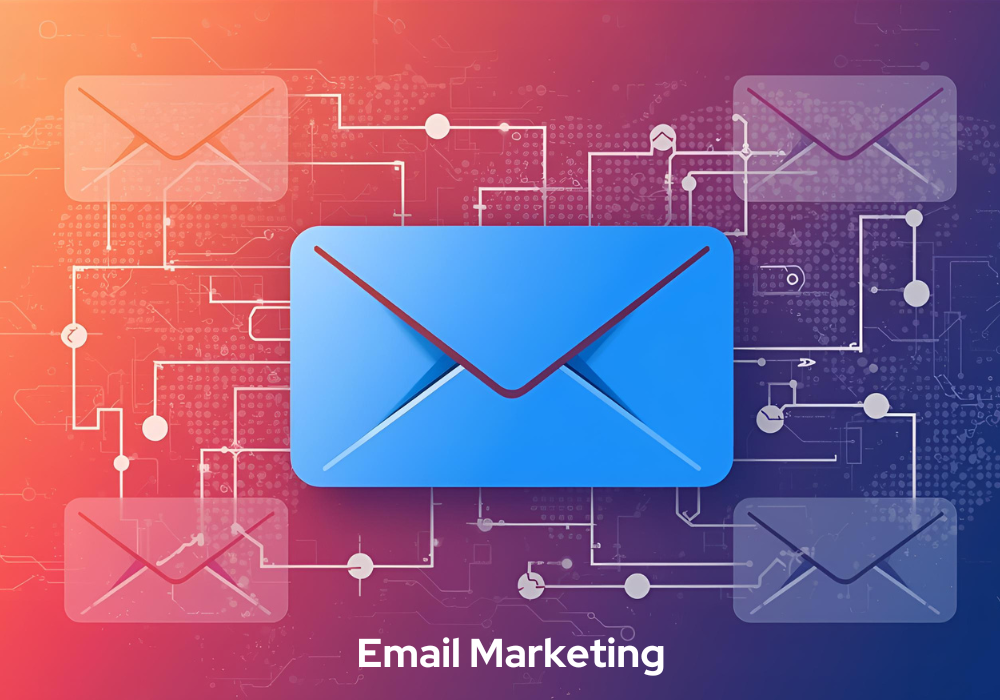
Campaign Statistics:
For instance, tailored drips during a capital campaign raised engagement 35% and recurring donations 20%, showing personalization’s power. A donor series on “your gift in action” turned lurkers into loyal donors and appreciators.
The personalization boosts output at 6x—we saw 4x at first, but tweaking for our voice (folksy, not corporate) hit that mark.
10. Volunteer Management: Your Unsung Heroes, Organized
Volunteers aren’t just hands; they’re hearts. Track shifts, skills, and shout-outs to keep them fired up. CRMs manage volunteer data, track hours, match skills, and automate thanks, improving retention, and increases return rates rapidly.
Volunteer Vibes:
Pre-CRM, our gala volunteers ghosted half the time. Now? Scheduling app + thank-you automations = 90% return rate. One even became a board member.
11. Event Management: Galas That Don’t Suck to Run
CRM tools, made specially for event management, ideally should handle RSVPs, tickets, and follow-ups without leaving your CRM for events like capital campaign galas.

Event Hack:
Our auction event synced attendees to donor segments—post-event, targeted “you missed this gem” emails snagged $2K in follow-on gifts. Arts for All managed 300 guests, sent personalized thanks, boosting next-year attendance 15% and adding $10,000 in donations.
12. Analytics Dashboards: Data That Doesn’t Lie
Spot what’s working in campaigns or donor dips with smart analytics integrated in the CRM for nonprofits. Dashboards visualize trends in campaigns and donations, enabling strategy adjustments like switching to storytelling for a higher impact.
You can use insights to counter dips, enhancing planned giving drives and many more events.
Statistics:
Analytics revealed our email open rates tanked mid-summer. Switched to lighter, story-driven content—donations perked up 18%.
13. Smarter Asks, Less Guesswork with AI
AI sifts data to flag “upgrade now” donors or at-risk lapsers. AI analyzes patterns to predict giving changes, focusing efforts on high-potential donors for recurring donations.
Early Adopter Note:
Tested it on 1,000 records; nailed 70% of our top givers. Focused calls there, freed time for creative storytelling. Senior Support Network targeted flagged donors, securing a 50% gift increase and legacy pledge during planned giving.
14. Social Media Integrations: Measurable Impact Across Channels
CRMs like Hootsuite links let you schedule and attribute engagement back to donations. You can generate leads by integrating it in your CRM for nonprofit tool for new recurring donations in crowdfunding for nonprofits.
Social Scoop:
For example, You may post a donor story thread that tracked 300 clicks to the donation page. It’s like having a megaphone that measures echoes.
15. Matching Gifts: Double the Love, Zero Extra Work
Tools like Double the Donation ping employers to match. Integrate it to notify about matches, doubling impacts. Community Health Initiative turned a $500 gift into $1,000 via corporate sponsorships, aiding capital campaigns.
Multiplier Magic:
Informed 20% of donors about matches; netted an extra $30K. One teacher donor was thrilled—her $200 became $400 for school supplies.
16. Mobile Giving & Peer-to-Peer Fundraising
Mobile tools enable text-to-give and P2P campaigns, attracting younger donors. Youth Empowerment Project’s P2P raised $2,000 per volunteer, expanding reach 300% for scholarships.
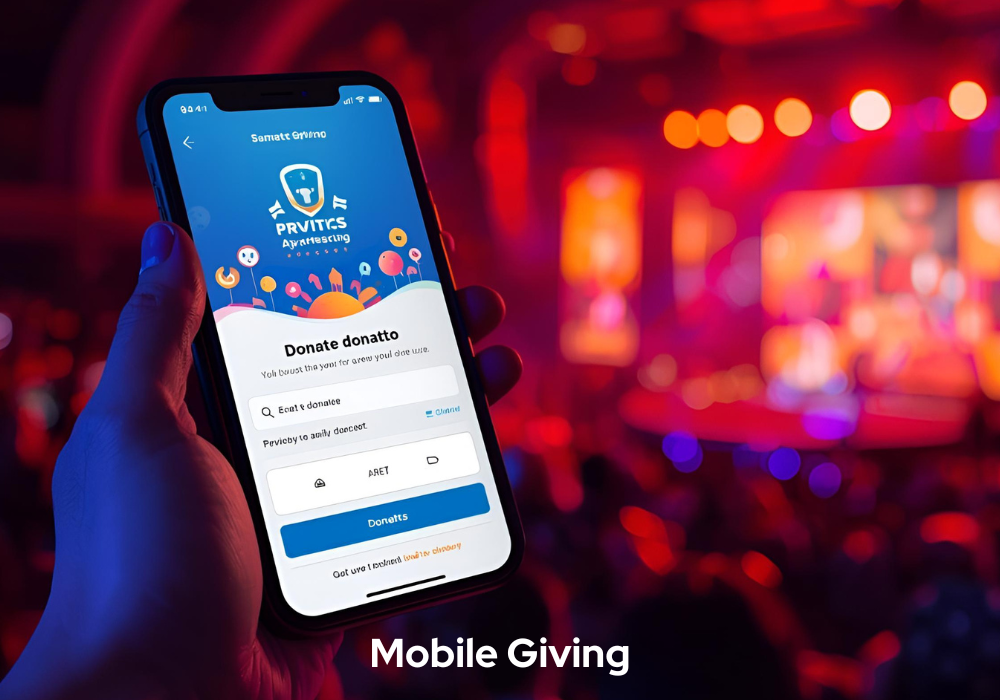
Mobile Moment:
During a walkathon, texts raised $5K spur-of-the-moment. Seamless sync meant no lost leads.
From Overwhelmed to Unstoppable
Remember Hope Tails, that scrappy rescue I mentioned earlier? They were drowning in manual everything until CRM integrations kicked in. Recurring donations stabilized ops, crowdfunding brought in fresh faces, and analytics lit the path for their capital campaign. Donations up 60%, burnout down—real change.
Conclusion
Stacking these tools in your CRM for nonprofits is like upgrading from a rusty bike to a turbocharged e-scooter. Whether you’re chasing planned giving whispers, locking in corporate sponsorships, or fueling crowdfunding for nonprofits, start small, pick three that hurt most today.
Are you ready to power up your donation crm for a nonprofit? Here’s to your next topic to boost donation: How to Plan & Execute a Peer-to-Peer Fundraising Campaign effectively.
FAQs
1. What is a donation CRM for nonprofits?
A donation CRM is a specialized software that helps nonprofits manage donor relationships, track contributions, and automate fundraising campaigns efficiently.
2. Why is donor segmentation important in a CRM?
Segmentation allows nonprofits to personalize communication and appeals, improving donor retention and engagement rates.
3. How can CRM tools help in capital campaigns?
They enable tracking of pledges, manage major gifts, and measure campaign progress with data-driven insights.
4. What’s the benefit of integrating crowdfunding in a CRM?
It centralizes donor data and campaign analytics, helping nonprofits engage wider audiences while maintaining consistency in outreach.
5. How does automation support recurring donations?
Automation simplifies billing, sends reminders, and ensures a consistent donation flow—boosting donor satisfaction.
6. What should nonprofits look for in CRM security features?
Look for GDPR compliance, encryption, access control, and regular security audits to protect sensitive donor data.
How does a nonprofit CRM support planned giving strategies?
It tracks donor intentions, uses data analytics to identify prospects, and automates nurturing communications to secure future donations through wills, trusts, and other legacy gifts.
What role does a CRM play in managing capital campaigns?
A CRM tracks pledges, milestones, and provides dashboards to visualize progress, helping organizations manage large-scale fundraising efforts efficiently and recognize achievements in real-time.
Why is automated acknowledgment important, and how does it work in a nonprofit CRM?
Automated acknowledgment ensures donors receive timely, personalized thank-you messages that include gift specifics and impact stories, fostering appreciation and ongoing engagement.
What are the key tools to manage donor relationships effectively in a nonprofit CRM?
Effective donor data management tools in a nonprofit CRM unify contact information, past donations, and notes into a single dashboard, allowing segmentation and targeted communication to enhance donor relationships.
fundraising campaign online donation tool
Last modified: November 8, 2025
